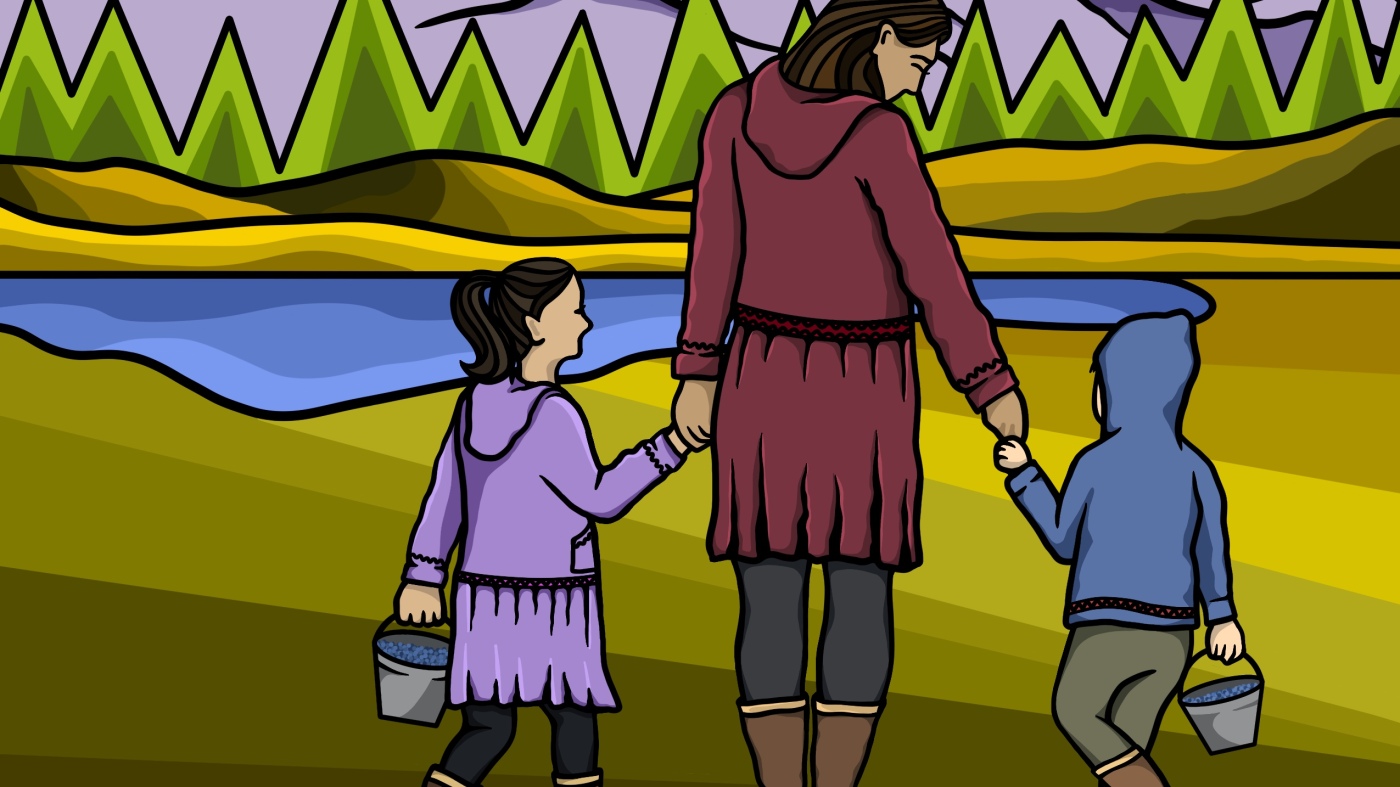The cover of the Yup’ik alphabet coloring book.
Courtesy of Nikki Corbett
hide caption
toggle caption
Courtesy of Nikki Corbett
Nikki Corbett was desperate.
The mother and small business owner had searched online and in stores near her home in Alaska’s Kenai Peninsula, but she could not find any books to teach her young children the Yup’ik language.
Growing up, Corbett says, she was more fluent in the language – because she lived in the largely Yup’ik community of Bethel, Alaska.
“And so obviously being immersed in that, you understand more and can speak more,” Corbett says. “But being away from it – the community that I live in, it’s not a language that’s normally spoken.”
So Corbett – and her friend, Katie O’Connor, an illustrator and mother – decided to create their own Yup’ik alphabet coloring book.

Nikki Corbett (left) and Katie O’Connor (right) won a fellowship from the Rasmuson Foundation to create a Yup’ik book for young language learners.
Courtesy of Nikki Corbett
hide caption
toggle caption
Courtesy of Nikki Corbett
In Alaska, there’s a market for primers like this.
More than 20% of the state’s population is Native. Of the estimated 21,000 Alaskans who identify as Yup’ik, nearly half speak the language.
In fact, Yup’ik is the most commonly spoken Native language in Alaska.
Corbett may have been immersed in Yup’ik culture when she was growing up in Bethel. But that’s not the case for every Alaska Native.
The subjugation of Native Americans and hostility toward Native language and culture has a lot to do with it, Corbett says.
“The younger generations, like my generation, in some of those areas, they don’t know the language because their parents were punished for speaking Yup’ik,” Corbett says. “And so I think that they were afraid to teach their children because they didn’t want their children to be punished for speaking our language.”
There are immersion schools in Alaska that have Yup’ik learning materials, but Corbett says it’s nearly impossible to find those books outside the classroom.
“If you go in the store and you see the kids section and you look at the educational material and you’ll see French or German or Spanish,” Corbett says. “Wherever those things are, we want to be able to create something similar in the Yup’ik language.”

A page from the Yup’ik coloring book.
Courtesy of Nikki Corbett
hide caption
toggle caption
Courtesy of Nikki Corbett
Katie O’Connor is an Inupiaq artist based in Nome, Alaska.
Growing up, O’Connor says, she didn’t learn much about her own Inupiaq culture until after high school.
“There’s not a lot available out there. And then also, when you start digging into it, the literature, the books that are out there related to any Alaska Native culture, most of them are written by non-Native people,” O’Connor says. “Most of them are written by people who aren’t from Alaska, and some are written by people who’ve never even been to our region.”
Corbett and O’Connor, who had met at the Iditarod, teamed up and applied for a fellowship to make their book.
The result is 27 pages, each featuring a letter of the Yup’ik alphabet and illustrations celebrating Yup’ik culture and heritage.
“The letters of the Yup’ik language, they relate to something in our culture, like you won’t see a coloring book that has fry bread in it,” Corbett says. “And so it’s images from a part of who we are as Alaska Natives.”
Corbett says they have between 700 and 1,000 bulk order requests for the coloring book — including an Alaska school district.
“Our culture is so strong and our people are resilient and just to be able to, you know, it’s just a coloring book. But for us, it’s just so much more than a coloring book,” Corbett says.
Corbett and O’Connor hope to release their next coloring book in the Inupiaq language.
Majd Al-Waheidi edited this article.
